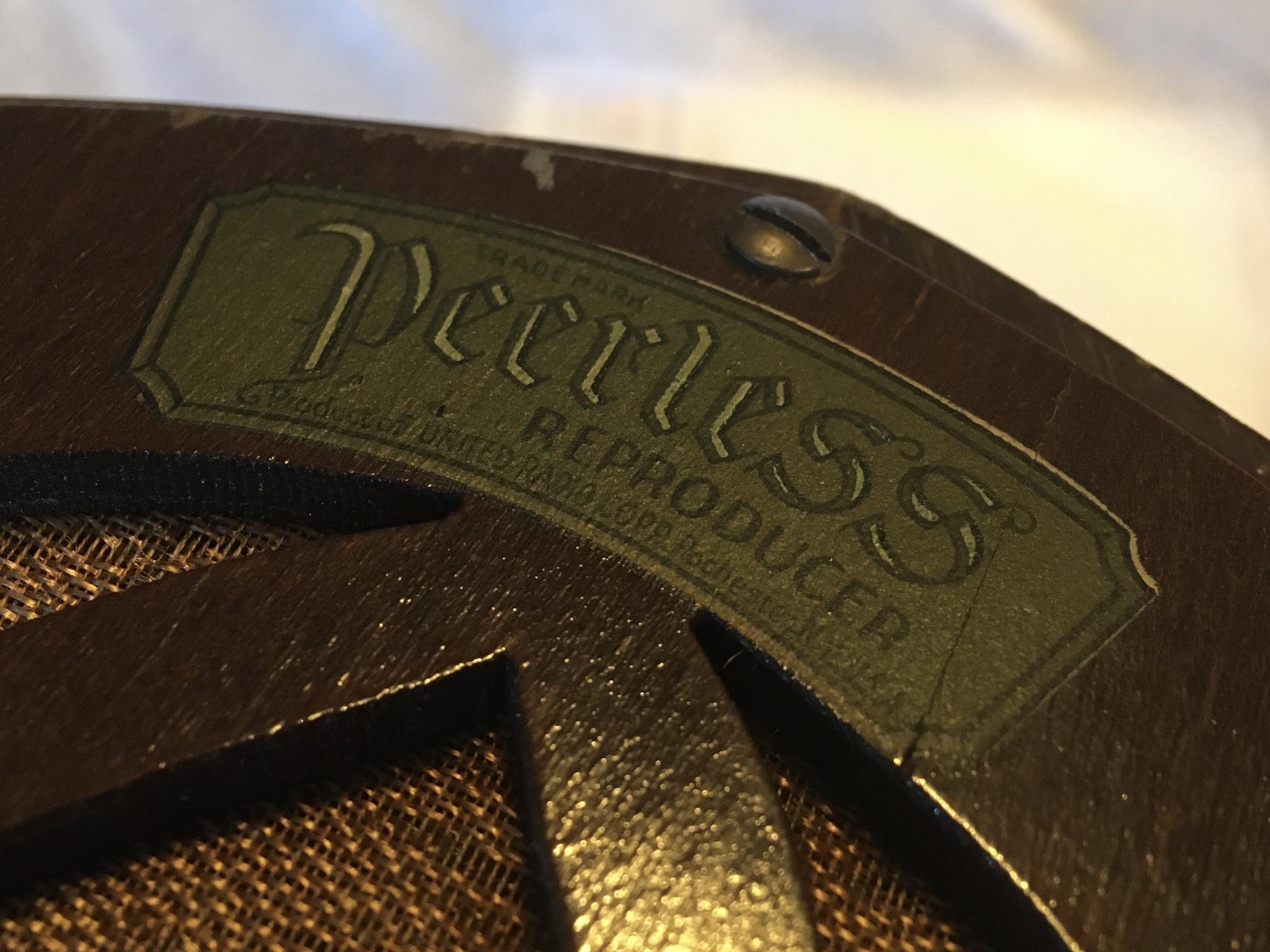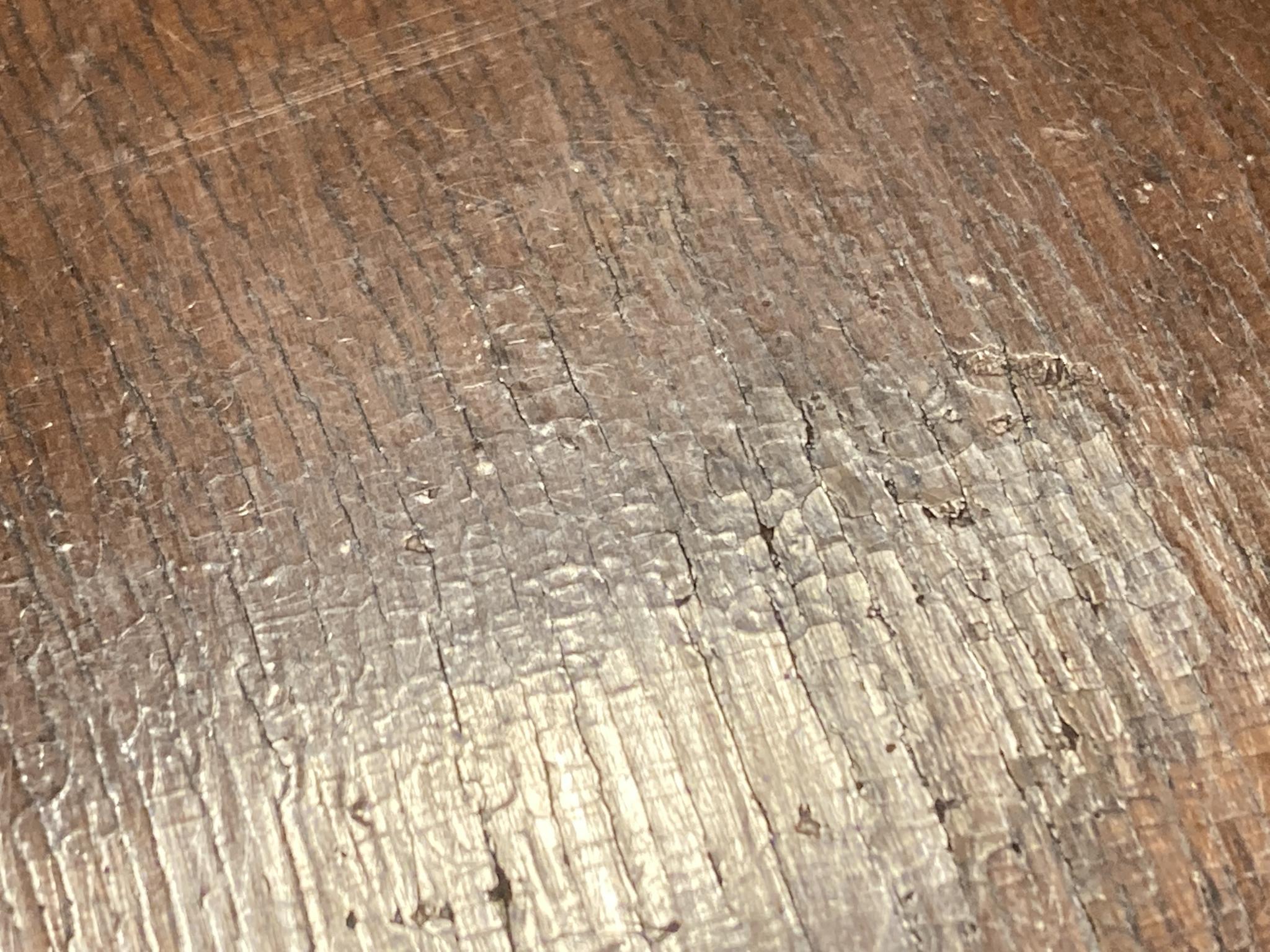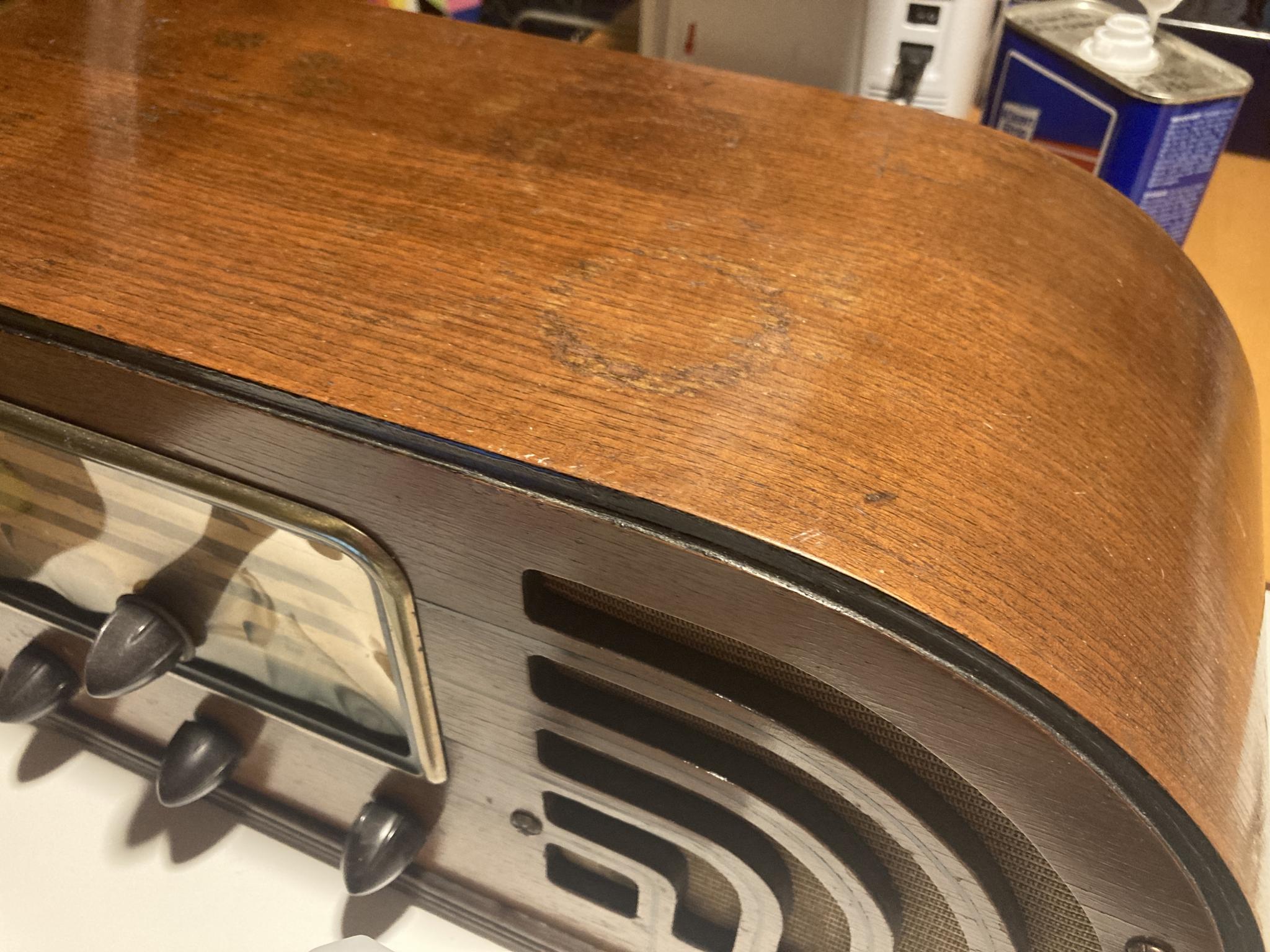In reply to Keith Tanner :
You had said that you could almost convince yourself that the fluorescence off the speaker was orange - that makes me wonder if there is shellac under the current coating, which might be only whisper-thin. Are there obvious brush marks in the top coat, or does it show greenish wiping streaks under UV? And if you were able to remove some of the finish with alcohol, there must have been a spirit varnish on it. Try this: on the reverse of the speaker, assuming the back fluoresces the same as the front (you always want to do your testing on the back of an object, or failing that, down low on a side where it won't show), dip a swab in toluene or xylene, wet a small spot on the surface and leave the swab lying there. When the swab is almost dry, check under it. If an alkyd or oil-based varnish has been applied over over a spirit varnish, the alkyd should have swelled, softened, pulled up. You should be able to roll it off without damage to a spirit-varnish. Toluene and xylene are non-polar solvents; alcohol-soluble varnishes are only affected by polar solvents, such as alcohol, ketones. Tell me what you find, and look at the results with both visible and UV light.
No, sorry, I don't know why the alcohol might have softened the finish on the radio. That craquelure is classic for nitrocellulose lacquer. How soft? Did it actually dissolve and flow out, even locally? I have never heard of a nitrocellulose lacquer that was strongly affected by alcohol. Back in its heyday, you could order any formulation of lacquer that met your needs - there were thousands. And though there might have been alcohols in the original solvent, it doesn't mean that the nitrocellulose was soluble in it, they were in it to perform some other function, like speed or slow the drying.
I've even heard of guys who went to the length of washing old nitrocellulose off with lacquer thinner, catching it, straining it, re-dissolving it, re-applying it. But they're still just re-applying a finish that has gone beyond it's age. I'm not sure I see the point, seems a little anal.
It's difficult, trying to do this long-distance, where I can neither see the effects of the tests, nor follow-up on them.
But courage, Keith; you can improve the looks of the finish on the radio. It just requires a different direction from the speaker. Let's take them separately. First, reduce the staining in that one water-ring with oxalic acid.
Dad


























